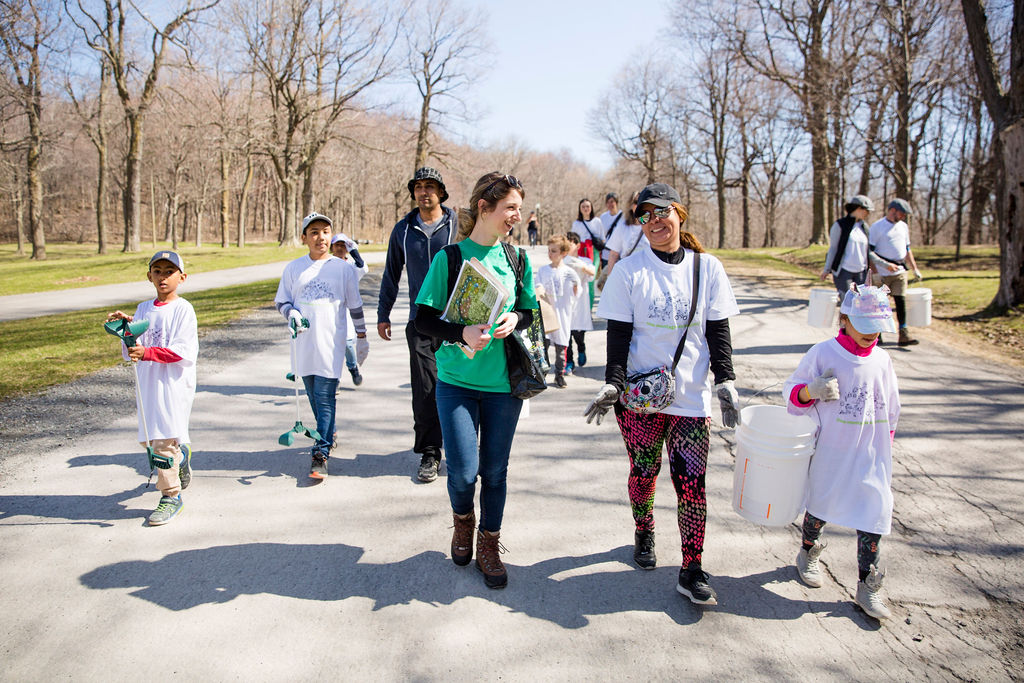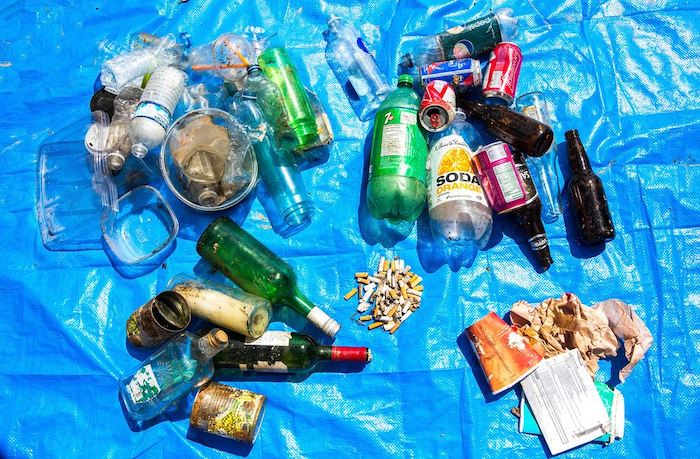Mount Royal, Greener than Ever Thanks to You
- June 11, 2019
Last Sunday, May 5, hundreds of enthusiastic volunteers of all ages answered our call to join in the annual spring cleaning of Mount Royal Park’s wooded areas! Even the sun was on hand for this special event! New this year, this 28th edition of the Mount Royal Clean-Up included sorting residual materials as well as collecting waste in the mountain’s woodlands.

Grouped into teams, volunteers rolled up their sleeves and put on gloves to pick up paper, cans, plastic and other types of trash in the park’s undergrowth. Based on the theme “Treasure or Trash,” the Clean-Up allowed many participants—young volunteers from St. George’s School and the environmental engagement program C-Vert for the most part—to learn about the principles of the zero waste movement by sorting and managing residual materials.
The 2019 Mount Royal Clean-Up in numbers:
Les amis de la montagne wishes to thank all the participants for their help and support during this important annual event!

What are the most common types of trash found in Mount Royal Park?
Cigarette butts are one of the most common types of litter in public spaces. If not recycled, cigarette butts require about 500 litres of water and from 1 to 5 years to disintegrate. Most butts end up in sewers and burned in incinerators.
That being said, the cellulose acetate that makes up the filters is recyclable. Once crushed, filter components are separated and fibres are melted to create small beads that are subsequently turned into plastic. This plastic can then be used to create street furniture or other innovative projects!
What happens to compostable dog poop bags left outside?
Unfortunately, bags of dog poop are a common sight on the trails in Mount Royal Park. Even though feces are organic and bags are biodegradable, leaving dog excrement in the outdoors is a public nuisance with impacts on:
Back 
Grouped into teams, volunteers rolled up their sleeves and put on gloves to pick up paper, cans, plastic and other types of trash in the park’s undergrowth. Based on the theme “Treasure or Trash,” the Clean-Up allowed many participants—young volunteers from St. George’s School and the environmental engagement program C-Vert for the most part—to learn about the principles of the zero waste movement by sorting and managing residual materials.
The 2019 Mount Royal Clean-Up in numbers:
- Over 400 participants picked up waste and sorted residual materials for 3 hours
- Over 50 bags of waste, 8 bags of recyclables and 15 bags of materials for recovery were collected
Les amis de la montagne wishes to thank all the participants for their help and support during this important annual event!
The ABCs of Waste
Do you know what types of litter are most common on Mount Royal? Here is a series of questions and answers prepared by our Conservation Patrol that says a lot about the types of garbage tossed into the forest!
What are the most common types of trash found in Mount Royal Park?
- Aluminum cans
- Tin cans
- Glass bottles
- Beer caps
- Plastic bags
- Cardboard
- Newspaper
- Plastic containers
- Styrofoam
- Cigarette butts
- Clothing
- Biomedical waste (sanitary napkins, tampons, condoms, syringes)
- Dog poop bags
- Newspaper: 3 to 12 months
- Cigarette butt: 2 to 5 years
- Gum: 5 years
- Plastic bag: 400 years
- Glass bottle: 4,000 years
- Plastic container or bottle: 100 to 1,000 years
- Tin can: 10 to 100 years
- Aluminum can: 200 to 500 years
- Sanitary napkin/tampon: 400 to 500 years
- Styrofoam (polystyrene): 1,000 years
Cigarette butts are one of the most common types of litter in public spaces. If not recycled, cigarette butts require about 500 litres of water and from 1 to 5 years to disintegrate. Most butts end up in sewers and burned in incinerators.
That being said, the cellulose acetate that makes up the filters is recyclable. Once crushed, filter components are separated and fibres are melted to create small beads that are subsequently turned into plastic. This plastic can then be used to create street furniture or other innovative projects!
What happens to compostable dog poop bags left outside?
Unfortunately, bags of dog poop are a common sight on the trails in Mount Royal Park. Even though feces are organic and bags are biodegradable, leaving dog excrement in the outdoors is a public nuisance with impacts on:
-
Public hygiene and human health: Feces contain harmful parasites that can be found in the water table and be harmful if waters are poorly treated. In addition, feces can take weeks or months to degrade completely depending on the environment and weather conditions.
-
The environment: Even if this type of bag is not ecotoxic, it can provide a minimal source of greenhouse gas emissions. Moreover, its use still raises questions about its true biodegradable potential.
